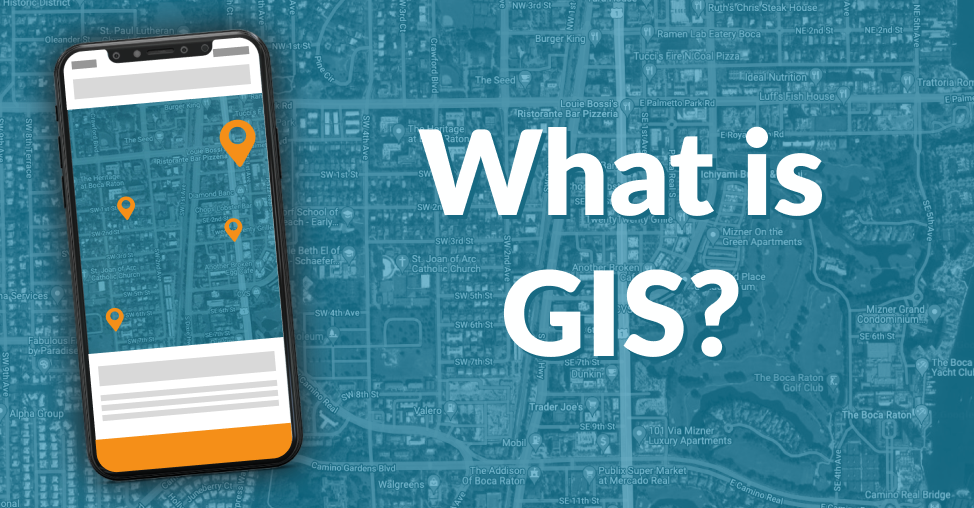Recent Posts
Sprint retrospectives are an essential aspect of Agile development, offering a platform for teams to reflect and flourish. This guide will shed light on some effective ways to conduct retrospectives, ensuring they are not just routine meetings, but catalysts for continuous team improvement. As a key element of Agile practices, sprint retrospectives are more than just discussions — they're opportunities for growth and learning.
Sprint retrospectives are an essential aspect of Agile development, offering a platform for teams to reflect and flourish. This guide will shed light on some effective ways to conduct retrospectives, ensuring they are not just routine meetings, but catalysts for continuous team improvement. As a key element of Agile practices, sprint retrospectives are more than just discussions — they're opportunities for growth and learning.
Introduction
In his workshop, (watch it here), TSL software engineer Nick Prat discusses advanced query techniques in Django, focusing on Aggregates, Annotations, and Subqueries. The session is designed to provide a deeper understanding of these features, demonstrating their role in improving query efficiency and handling larger datasets in Django. Specifically, Nick covered:
Introduction
In his workshop, (watch it here), TSL software engineer Nick Prat discusses advanced query techniques in Django, focusing on Aggregates, Annotations, and Subqueries. The session is designed to provide a deeper understanding of these features, demonstrating their role in improving query efficiency and handling larger datasets in Django. Specifically, Nick covered:
Introduction
This blog follows up on our recent DRF Fundamentals: Permissions and Filtering workshop (watch it here), led by TSL software engineer, Pedro Tibúrcio. The basics of setting up permissions, using DRF's permission classes, creating custom permissions, and implementing filtering were discussed. Specifically, Pedro covered:
Introduction
This blog follows up on our recent DRF Fundamentals: Permissions and Filtering workshop (watch it here), led by TSL software engineer, Pedro Tibúrcio. The basics of setting up permissions, using DRF's permission classes, creating custom permissions, and implementing filtering were discussed. Specifically, Pedro covered:
Navigating the Uncertain Waters of Software Development
When it comes to Agile Scrum in software engineering and development, there's one concept that stands out as a guiding principle in the initial stages of project management: the Cone of Uncertainty. This concept helps teams grasp the evolution of uncertainty throughout a project's lifecycle. In this blog, we'll explore what the Cone of Uncertainty is and why it's important in Agile Scrum. We’ll discuss how it can be useful in decreasing uncertainty and help achieve more accurate estimates, assist in risk management, and determine expectations for a given project.
Navigating the Uncertain Waters of Software Development
When it comes to Agile Scrum in software engineering and development, there's one concept that stands out as a guiding principle in the initial stages of project management: the Cone of Uncertainty. This concept helps teams grasp the evolution of uncertainty throughout a project's lifecycle. In this blog, we'll explore what the Cone of Uncertainty is and why it's important in Agile Scrum. We’ll discuss how it can be useful in decreasing uncertainty and help achieve more accurate estimates, assist in risk management, and determine expectations for a given project.
In Agile software development, writing user stories is an essential skill for any Scrum team. A well-crafted user story serves as a building block for delivering valuable features to customers efficiently. An effective strategy to improve the quality of your user stories is the INVEST criteria. In this blog post, we'll delve into the INVEST criteria and explore how it can be a useful tool for enhancing your team's storywriting skills.
In Agile software development, writing user stories is an essential skill for any Scrum team. A well-crafted user story serves as a building block for delivering valuable features to customers efficiently. An effective strategy to improve the quality of your user stories is the INVEST criteria. In this blog post, we'll delve into the INVEST criteria and explore how it can be a useful tool for enhancing your team's storywriting skills.
The Power of Scrum Principles
Scrum is a framework in project management that thrives on embracing uncertainty and creativity. It is structured around the process of learning from past work and determining how to continuously improve while moving forward. Scrum’s power is in its simplicity. It encourages teams to zero in on delivering what's most valuable without getting lost in complexity. Designed for flexibility, Scrum helps teams adapt to shifts in conditions and user needs. This framework — and adhering to the six key Scrum principles — incorporates re-prioritization as a built-in feature and employs quick release cycles, ensuring your team is always in a state of learning and improvement.
The Power of Scrum Principles
Scrum is a framework in project management that thrives on embracing uncertainty and creativity. It is structured around the process of learning from past work and determining how to continuously improve while moving forward. Scrum’s power is in its simplicity. It encourages teams to zero in on delivering what's most valuable without getting lost in complexity. Designed for flexibility, Scrum helps teams adapt to shifts in conditions and user needs. This framework — and adhering to the six key Scrum principles — incorporates re-prioritization as a built-in feature and employs quick release cycles, ensuring your team is always in a state of learning and improvement.
Introduction
In the world of software development or any business, change is the lifeblood of progress. When issues arise and it becomes clear that existing processes are no longer effective, the logical step is to make the necessary changes. It may sound straightforward, but in reality, the decision to alter established processes can be an incredibly daunting one. Often, this fear of change becomes the barrier that holds organizations back from reaching their full potential.
Fear, as described by Dr. Otto Scharmer, a professor at MIT's Sloan School of Management, wields a powerful influence over our actions, often stifling creativity. It prompts us to stick to familiar, though ineffective, patterns. We end up defending the status quo, even when it contradicts reason and obstructs growth. Thankfully, Dr. Scharmer provides a method to overcome this fear by guiding us through three internal voices: judgment, cynicism, and ultimately, fear. (Theory U: Leading from the Future as it Emerges, 2nd Edition by C. Otto Scharmer, 2016)
Introduction
In the world of software development or any business, change is the lifeblood of progress. When issues arise and it becomes clear that existing processes are no longer effective, the logical step is to make the necessary changes. It may sound straightforward, but in reality, the decision to alter established processes can be an incredibly daunting one. Often, this fear of change becomes the barrier that holds organizations back from reaching their full potential.
Fear, as described by Dr. Otto Scharmer, a professor at MIT's Sloan School of Management, wields a powerful influence over our actions, often stifling creativity. It prompts us to stick to familiar, though ineffective, patterns. We end up defending the status quo, even when it contradicts reason and obstructs growth. Thankfully, Dr. Scharmer provides a method to overcome this fear by guiding us through three internal voices: judgment, cynicism, and ultimately, fear. (Theory U: Leading from the Future as it Emerges, 2nd Edition by C. Otto Scharmer, 2016)
The Manifest Names The SilverLogic as one of the Most Reviewed Custom Software Development Companies in Miami
The SilverLogic team is proud to share our latest award within the technology industry! We’ve been named one of the most-reviewed custom software development companies in Miami by The Manifest. This is another amazing accomplishment made by our company so far this year!
The Manifest Names The SilverLogic as one of the Most Reviewed Custom Software Development Companies in Miami
The SilverLogic team is proud to share our latest award within the technology industry! We’ve been named one of the most-reviewed custom software development companies in Miami by The Manifest. This is another amazing accomplishment made by our company so far this year!
Introduction
If you've ever needed to translate a document from English into another language, you understand the importance of getting the translation right. The accuracy of your translation can significantly impact your business endeavors, potentially opening up new markets or sealing critical business deals. While professional human translation is often the gold standard for important documents, machine translation, such as Google Translate, can be a handy tool for quick translations. In this blog, we'll explore the differences, benefits, and drawbacks of Google Translate and localization.
Introduction
If you've ever needed to translate a document from English into another language, you understand the importance of getting the translation right. The accuracy of your translation can significantly impact your business endeavors, potentially opening up new markets or sealing critical business deals. While professional human translation is often the gold standard for important documents, machine translation, such as Google Translate, can be a handy tool for quick translations. In this blog, we'll explore the differences, benefits, and drawbacks of Google Translate and localization.
Introduction
Website development used to be complicated. It required a significant amount of time and effort, creativity, and extensive coding expertise. Alternatively, if you had the money, you could hire a web designer to build the site for you. But now, with the rise of website builders, building your dream site is easier and less expensive than ever.
Introduction
Website development used to be complicated. It required a significant amount of time and effort, creativity, and extensive coding expertise. Alternatively, if you had the money, you could hire a web designer to build the site for you. But now, with the rise of website builders, building your dream site is easier and less expensive than ever.
The Benefits and Disadvantages of Fast Development
In the world of software development, the speed of development plays a critical role. Clients seeking solutions to their problems often want them delivered quickly and cost-effectively.
The Benefits and Disadvantages of Fast Development
In the world of software development, the speed of development plays a critical role. Clients seeking solutions to their problems often want them delivered quickly and cost-effectively.
What is a geographic information (GIS) system?
A geographic information system (GIS) is a system for creating, managing, analyzing, and mapping various types of data. GIS ties data to a map by combining location data (where things are) with several forms of descriptive data (what things are like there). This lays the groundwork for mapping and analysis employed in science and nearly every sector. Users can utilize GIS to better comprehend trends, relationships, and the context of their location. Improved communication and efficiency, as well as better management and decision-making, are all advantages.
What is a geographic information (GIS) system?
A geographic information system (GIS) is a system for creating, managing, analyzing, and mapping various types of data. GIS ties data to a map by combining location data (where things are) with several forms of descriptive data (what things are like there). This lays the groundwork for mapping and analysis employed in science and nearly every sector. Users can utilize GIS to better comprehend trends, relationships, and the context of their location. Improved communication and efficiency, as well as better management and decision-making, are all advantages.



